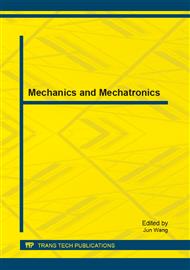p.673
p.682
p.688
p.693
p.701
p.706
p.713
p.718
p.725
Temperature Rise Model of Drum Brake
Abstract:
In order to analysis the temperature rising rules of vehicle, road conditions and vehicle running state were considered. Process of friction heat generation, radiation heat and convection current exchange during drum brake working process was researched, and temperature rising model of drum brake was established. Under the guidance of similarity theory and dimension analysis theory, convection current heat exchange test of drum brake was carried out, and the solution equation of convection current heat exchange was obtained. Real road test results shows that the temperature rising curves between calculations and test are basically identical and the maximum inaccuracy variables approximately 20%.
Info:
Periodical:
Pages:
701-705
Citation:
Online since:
October 2013
Authors:
Keywords:
Price:
Сopyright:
© 2013 Trans Tech Publications Ltd. All Rights Reserved
Share:
Citation:


